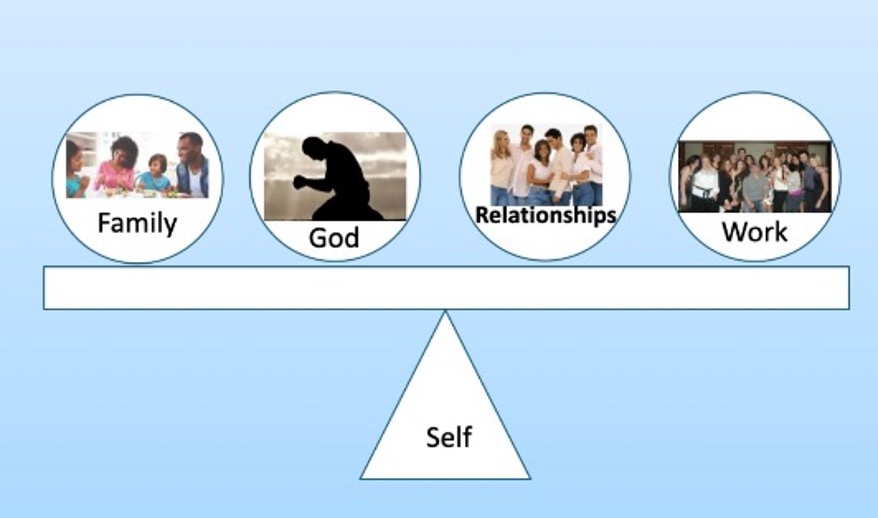
by Dr Gene | Feb 21, 2025 | Health
Wine: History, Rituals, and the Complex Interplay of Health and Enjoyment
How many of you had a glass of wine last night? You likely enjoyed its rich flavor and comforting warmth as you swirled that ruby-red liquid or admired the pale golden hues. But did you pause for a moment to reflect on the history and deeper significance of the drink in your hand? Wine, often referred to as the “nectar of the gods,” has an ancient and storied past, filled with rituals, religion, and even health controversies.
Wine is more than just a beverage. It’s a cultural symbol, a social facilitator, and a source of passionate enjoyment for some. Its journey through history—from ancient grape cultivation to modern wine-tasting rituals—has cemented its place in human life. Let’s explore this timeless drink, its impact on health, and what makes it such a fascinating subject of study.
A Historical Look at the Nectar of the Gods
Wine has long been revered as something divine. The ancient Greeks worshipped Dionysus, the god of wine, fertility, and revelry. The Romans adopted him, calling him Bacchus, and credited him with spreading the art of viniculture across the Mediterranean. Archaeological evidence suggests that grape cultivation dates back as far as 7000 BC in regions of what is now Georgia, with written records of wine-making appearing around 3500 BC.
The Romans were pivotal in spreading grape cultivation and winemaking techniques throughout their vast empire, from modern-day Spain to France, Germany, and beyond. Their advancements in viticulture laid the groundwork for many of the world’s most famous wine-producing regions today.
Wine in Religious and Cultural Rituals
Wine isn’t just a drink—it’s a symbol deeply woven into religious and cultural traditions. In Christianity, wine holds profound spiritual significance, representing the blood of Christ in the sacrament of the Eucharist. Christians partake in this ritual weekly, linking wine to faith and remembrance. In Judaism, wine is an integral part of Sabbath blessings and major religious holidays, representing joy and sanctity.
Culturally, wine is central to many social rituals. At fine dining establishments, sommeliers present wines with great ceremony, swirling and tasting before pouring for guests. We raise our glasses in toasts, wishing health and longevity with phrases like “To life!” or “To a hundred years!” These traditions connect us to the long, rich history of wine.
Wine and Health: A Complex Relationship
In recent decades, there has been an ongoing debate about wine’s health benefits and risks. On the one hand, we often hear about the potential benefits of wine, especially red wine, in promoting heart health and longevity. On the other hand, we are reminded that wine, like all alcoholic beverages, contains ethanol—a neurotoxin that can cause serious harm when consumed in excess.
So, where does the truth lie? Let’s explore the science behind wine’s effects on the body and brain.
What Happens in the Brain When We Drink Wine?
When you take a sip of wine, the alcohol begins to affect your brain almost immediately. Alcohol acts as a depressant on the central nervous system, slowing down brain activity and reducing inhibitions. This is why a glass of wine often makes people feel more relaxed, sociable, and less stressed.
Additionally, wine stimulates the release of dopamine in the brain’s reward center. Dopamine is the same neurotransmitter involved in feelings of pleasure, which helps explain the sense of enjoyment and warmth that many associate with drinking wine.
However, not all alcoholic drinks affect the brain in the same way. While ethanol is the primary psychoactive ingredient in all alcoholic beverages, wine contains additional compounds—such as polyphenols and antioxidants—that may enhance its effects or provide additional health benefits.
Is All Alcohol Created Equal?
A common question is whether wine, beer, and spirits like vodka or whiskey affect the body differently. From a purely alcohol-content perspective, a standard glass of wine, a bottle of beer, and a shot of vodka all deliver roughly the same amount of alcohol to your bloodstream. However, wine differs in its chemical composition.
Wine, particularly red wine, contains polyphenols such as resveratrol, which are believed to have antioxidant properties. Resveratrol is found in the skin of red grapes, and studies suggest that it may help reduce inflammation and improve heart health. This sets wine apart from spirits and beer, which generally lack these beneficial compounds.
The French Paradox and Resveratrol
The so-called “French Paradox” refers to the observation that people in certain regions of France, despite consuming diets high in saturated fats and cholesterol, tend to have lower rates of heart disease. Some researchers have attributed this phenomenon to the regular consumption of red wine.
Resveratrol, one of the key polyphenols in red wine, has been studied extensively for its potential cardiovascular benefits. It’s thought to improve blood vessel function, reduce inflammation, and protect against oxidative stress. While the exact role of wine in the French Paradox remains debated, moderate wine consumption, combined with a Mediterranean diet rich in vegetables, fruits, and healthy fats, appears to contribute to overall health and longevity in regions like France and Sardinia.
How Much Wine is Too Much?
While moderate wine consumption may have health benefits, excessive drinking poses significant risks. Medical experts generally define moderate consumption as up to one glass per day for women and up to two glasses per day for men. Beyond these limits, the risks of alcohol-related diseases—such as liver disease, certain cancers, and neurological damage—begin to outweigh any potential benefits.
It’s also important to remember that not everyone metabolizes alcohol in the same way. Factors such as age, sex, genetics, and overall health can influence how wine affects an individual. As with any substance, balance is key.
Why People Are Passionate About Wine
Beyond its potential health benefits, wine inspires passion for several reasons. Its rich diversity in flavors, aromas, and textures makes it a sensory delight. No two wines are exactly alike, even when produced from the same grape variety in the same region. The artistry involved in winemaking—combined with the rituals surrounding its consumption—makes wine an experience rather than just a beverage.
For many, wine also represents a connection to history, culture, and the land. Each bottle tells a story of the region where the grapes were grown, the winemaker’s traditions, and the vintage year’s unique conditions.
Final Thoughts: A Balanced Perspective
Wine has captivated humanity for thousands of years, not only for its taste and intoxicating effects but also for its cultural significance and potential health benefits. While moderate consumption may support heart health and longevity, it’s essential to approach wine mindfully. Enjoying wine as part of a balanced lifestyle—paired with nutritious food, good company, and physical activity—can enhance both well-being and life’s pleasures.
So, the next time you raise a glass, savor not just the flavor but also the rich history and nuanced science that make wine truly the “nectar of the gods.”

by Dr Gene | Feb 13, 2025 | Health
In the realm of healthy eating, the Mediterranean Diet is a shining star. With its tantalizing flavors and rich history, this diet has garnered widespread recognition for its numerous health benefits. Let’s explore what makes the Mediterranean Diet so special and why it has won the hearts and taste buds of millions.
Quality over quantity is a fundamental Italian principle when it comes to food. By prioritising fresh, gih-quality ingredients, Italians ensure that every meal is nutritious and delicious.
A Journey Through Time: The Mediterranean Diet is not just a diet; it’s a way of life rooted in centuries-old traditions. Its origins can be traced back to the Mediterranean region, where people have been savoring its delights for generations. The diet was first brought to international attention in the 1960s by researchers who noticed that people living in the Mediterranean region had lower rates of heart disease than other Western populations.
Key Components: At the heart of the Mediterranean Diet are nutrient-rich foods that promote overall well-being:
- Fruits and Vegetables: Abundant in vitamins, minerals, and antioxidants.
- Olive Oil: A healthy source of monounsaturated fats.
- Fish: Rich in omega-3 fatty acids, promoting heart health.
- Nuts and Seeds: Packed with essential nutrients.
- Whole Grains: Fiber-rich for digestive health.
- Lean Proteins: Like poultry and legumes for balanced nutrition.
- Moderate Wine Consumption: In some variations, for antioxidant benefits.
Health Benefits: Embracing the Mediterranean Diet can lead to numerous health advantages, including:
- Heart Health: Reduced risk of heart disease and stroke.
- Weight Management: Support for healthy weight maintenance.
- Improved Cognitive Function: Lower risk of cognitive decline.
- Diabetes Management: Better blood sugar control.
- Cancer Prevention: Reduced risk of certain cancers.
- Longevity: Linked to a longer and healthier life.
Wide Acceptance: The Mediterranean Diet has gained global acclaim and is celebrated by health-conscious individuals and experts alike. Its balanced approach to eating, emphasis on fresh ingredients, and delicious flavors make it an appealing choice for those looking to enhance their well-being through their diet.
In conclusion, the Mediterranean Diet is more than just a culinary choice; it’s a lifestyle that offers a myriad of health benefits. With its rich history and widespread acceptance, it’s no wonder that this diet continues to captivate the hearts and palates of people worldwide. So, why not embark on a journey to better health and happiness through the Mediterranean Diet? Your taste buds and your body will thank you for it!

by Dr Gene | Feb 7, 2025 | Health
Knowledge is often described as a treasure, a precious gift that has the potential to transform lives. Yet, as the ancient Chinese philosopher Lao Tzu so wisely pointed out, the journey of a thousand miles begins with a single step. Knowing alone is not enough—it is action that turns knowledge into real-life change. Without that crucial step, even the most profound wisdom remains inert, like an unopened gift. Throughout life, countless treasures of knowledge present themselves, each offering the potential to improve aspects of our lives—whether it be fitness, nutrition, health, or overall well-being. However, one essential ingredient is practice for these treasures to have a real impact. In other words, action.
As a healthcare professional, I have often reflected on the term “practice.” When people hear about a “medical practice” or a “dental practice,” they might imagine doctors and dentists perpetually experimenting, always trying to get it right. In a sense, that is true. Every time I treat a patient, I bring my accumulated knowledge and experience to the encounter. However, no matter how much I know, the essence of practice is action. I can’t help my patients without acting on my knowledge. Practice means consistently applying what I know, learning from each experience, and striving to improve. This approach applies not only to dentistry but also to life. Knowledge, no matter how vast or profound, accomplishes nothing unless it is paired with action.
The principle remains the same when it comes to achieving personal goals—whether they involve weight loss, fitness, or overall wellness. Knowledge provides the foundation, but action is what propels us forward. Imagine knowledge as a tree laden with ornaments, each representing a valuable lesson or insight. Those ornaments may look beautiful from a distance, but they serve no purpose unless we reach out, take them, and put them to use. The process of turning knowledge into action doesn’t have to be overwhelming. In fact, the key to success is simplicity—taking it one step at a time, one action at a time.
Lao Tzu’s wisdom about the thousand-mile journey underscores this truth. Big changes don’t happen overnight. You can’t undo years of unhealthy habits with a single affirmation or one grand resolution. Instead, progress is made through small, consistent steps, each building on the last. It is a gradual process of moving forward, even in the face of setbacks. Life is filled with challenges, and each challenge can seem insurmountable when viewed as a whole. I like to think of these challenges as elephants—huge, daunting, and seemingly impossible to tackle. When faced with such an elephant, the question arises: how do you eat an elephant? As Desmond Tutu famously said, the answer is simple: one bite at a time.
This mindset has served me well throughout my life. Whether the goal was to lose weight, commit to a regular exercise routine, or overcome personal obstacles, the process always began with that first bite. Losing 65 pounds might seem impossible when viewed as a whole, just as starting a four-day-a-week exercise regimen might feel overwhelming. But by breaking the goal down into manageable steps—by focusing on one bite at a time—it becomes achievable.
Getting started is often the hardest part. When we look at the entirety of a task, it can seem too monumental, too vast even to attempt. That’s when the principle of taking one step at a time becomes crucial. Instead of being paralyzed by the size of the elephant, we can focus on just the first bite. With each small action, we gain momentum. The first step leads to the next, and then the next, until progress becomes inevitable. Over time, what once seemed impossible becomes a reality.
Of course, this approach might sound too simple or too straightforward. But that’s exactly the point. Success doesn’t come from grand gestures or complicated strategies. It comes from consistent practice, from the willingness to take small, deliberate steps toward a goal. The journey toward abundant fitness, health, and wellness isn’t about perfection. It’s about persistence. It’s about showing up every day, doing the work, and trusting that each small action brings you closer to your destination.
Practice is the bridge between knowing and becoming. Without it, knowledge remains theoretical, a collection of facts and ideas that never influence real life. With practice, knowledge becomes a powerful tool for transformation. This is true in every aspect of life. Whether you’re aiming to improve your physical health, strengthen relationships, or cultivate a sense of inner peace, the process begins with that first step. You don’t have to have it all figured out from the start. You just have to start.
Throughout this journey, it’s important to remember that setbacks are a natural part of the process. There will be days when progress feels slow or when obstacles seem insurmountable. In those moments, the key is to keep moving forward, even if only in small steps. Each step, no matter how small, is a victory. Each action, no matter how minor, contributes to the larger goal. Over time, these small victories add up, creating lasting change.
Enjoying the journey is just as important as reaching the destination. Life isn’t a race to the finish line; it’s a series of moments, each offering an opportunity to learn, grow, and improve. By embracing the process, by taking pleasure in each step forward, we can find joy in the journey itself. The path to abundant health and wellness isn’t about achieving a perfect state; it’s about living fully, with intention and purpose.
So, as you begin your own thousand-mile journey, remember that the first step is all it takes to set things in motion. The knowledge is already within you. The path is yours to walk. With each step, you move closer to the life you envision. And with each act of practice, you unlock the true potential of the treasure you hold. Enjoy the journey!

by Dr Gene | Feb 4, 2025 | Health
A well-rounded individual isn’t someone who excels at everything but rather someone who has discovered the delicate art of balance across all areas of life. Achieving this balance is essential for peace, happiness, and well-being. While striving for external goals like financial success or personal achievements can drive growth, it’s equally important to cultivate internal peace by appreciating what we have. Finding the right equilibrium—where gratitude meets ambition—can be the key to a fulfilling life.
The final step in my personal journey toward boundless health and wellness was perhaps the most challenging: maintaining balance. It was too easy to become consumed by a single goal, whether it was work, fitness, relationships, or personal development, and lose sight of the broader picture. Life isn’t just one thing; it’s a complex interplay of various elements that need tending. When one area overshadows the rest, imbalance arises, often leading to stress, dissatisfaction, and even illness.
Consider your own life for a moment: How do you spend your time? Where do you direct your mental energy? Who do you interact with most often? These simple reflections can reveal whether your life is in balance or if one aspect dominates your attention to the detriment of others. Achieving balance doesn’t mean giving each area equal time every day but rather ensuring that none is entirely neglected. At different stages of life, some areas naturally take precedence over others—and that’s okay. What matters is keeping all aspects of life in mind.
Spirituality often plays a crucial role in achieving balance for many people. Some believe that God or a higher power should be the central focus, while others find balance by recognizing the divine in every facet of life—in relationships, work, and self-care. Personally, I am continually awed by the harmony of life itself. The human body, for example, is a masterpiece of balance and interconnectedness. Every cell, every process, every nutrient we consume is part of an intricate symphony that sustains us. When we live in balance, we align ourselves with this natural order, fostering a sense of unity with both the world around us and the creator.
Self-love is at the core of balance. Without it, we risk neglecting vital areas of life. Taking care of ourselves—physically, mentally, emotionally, and spiritually—is not selfish; it is necessary for sustaining all other aspects of life. When we nurture ourselves, we can better nurture our families, contribute meaningfully to our work, and maintain healthy relationships. Balance isn’t about sacrificing one area for another but about ensuring that every part of our lives receives the attention it deserves.
However, modern life often presents significant obstacles to achieving balance. Work, in particular, can become all-consuming. I have known many people who commuted long hours to demanding jobs in New York City, leaving them with little time or energy for anything else. Their lives became a cycle of work, eat, sleep, and repeat, with balance relegated to the weekends—if at all. Over time, such an imbalance leads to physical and emotional burnout, strained relationships, and deteriorating health.
On the other end of the spectrum, some families become entirely centered around their children, with parents losing themselves in the process. While children are undoubtedly important, making them the sole focus can leave little room for personal growth, fitness, or nurturing relationships. Without balance, even the most well-intentioned focus can lead to feelings of frustration, exhaustion, and dissatisfaction.
Similarly, it’s possible to become overly fixated on health and fitness. While taking care of our bodies is essential, it shouldn’t come at the expense of everything else. When workouts and dietary routines consume our time and attention, we risk neglecting our loved ones, spiritual well-being, and professional responsibilities. True health is holistic; it encompasses physical fitness and emotional, relational, and spiritual well-being.
Humans are inherently social beings, and balance requires nurturing our connections with others. In the past, people worked and lived in close-knit communities, sharing their talents and passions with those around them. Today, many of us work primarily to sustain our lifestyles, often at the expense of personal fulfillment. Striking a balance means finding work that pays the bills and nourishes the soul. It means dedicating time to recharge through proper rest, alone time, and connection with nature.
Signs of imbalance are often easy to spot, such as working long hours without rest, neglecting spiritual practices, feeling disconnected from loved ones, or ignoring one’s health. If you find yourself constantly stressed, gaining weight, struggling to sleep, or feeling unfulfilled, it might be time to reevaluate your life and seek a better balance. Similarly, if your phone consumes more of your attention than your family, or if you can’t remember the last time you took a walk in the park, these signals show that balance needs to be restored.
It’s important to understand that balance is not a static state; it’s a dynamic process. Life is constantly changing, and our priorities shift accordingly. What remains crucial is our commitment to maintaining balance amidst the changes. By taking care of ourselves, nurturing our relationships, finding joy in our work, and keeping our spiritual connection alive, we can create a life that is both fulfilling and sustainable.
Achieving balance requires mindfulness and intentionality. It might involve setting boundaries at work to protect personal time, prioritizing regular exercise and healthy eating without becoming obsessive, or making time for loved ones despite a busy schedule. It could mean revisiting spiritual practices or simply allowing yourself moments of quiet reflection. Balance is deeply personal, and what works for one person might not work for another. The key is continually assessing and adjusting, ensuring that no part of life is consistently neglected.
Ultimately, balance brings a sense of peace and fulfillment. It allows us to appreciate the present while working toward future goals. It helps us navigate life’s inevitable ups and downs with grace and resilience. When we live in balance, we not only enhance our own well-being but also contribute positively to the lives of those around us. In a world that often pushes us toward extremes, striving for balance can be a radical act of self-care and a powerful path to true wellness.

by Dr Gene | Jan 24, 2025 | Health
Stress has become an inescapable part of modern life. Between the demands of work, family obligations, and the constant influx of digital information, the mind is often left in a state of perpetual tension. This chronic stress takes a toll not only on mental well-being but also on physical health, contributing to conditions like hypertension, insomnia, and even a weakened immune system. As such, learning effective methods to manage stress is essential for anyone seeking a more balanced, healthier life. Among the various tools available for stress management, breathing exercises stand out for their simplicity, accessibility, and profound impact.
Breathing is one of the few bodily functions that occurs both automatically and voluntarily. While we don’t need to think about it to stay alive, conscious control of the breath can unlock many benefits, particularly when managing stress. Breathing exercises work by engaging the parasympathetic nervous system—the body’s rest-and-digest mechanism. When we’re stressed, the sympathetic nervous system, responsible for the fight-or-flight response, takes over, causing our heart rate to increase, muscles to tense, and breathing to become rapid and shallow. By slowing and deepening the breath, we signal to the brain that it’s safe to relax, which in turn reduces the physiological symptoms of stress.
The benefits of breathing exercises extend beyond immediate stress relief. Regular practice can lead to improved emotional regulation, better focus, and even enhanced resilience in the face of future stressors. Research has shown that individuals who practice controlled breathing exercises experience lower levels of cortisol, the primary stress hormone. Furthermore, these exercises can improve cardiovascular health by lowering blood pressure and heart rate, making them an excellent long-term strategy for well-being.
At first glance, breathing exercises and meditation might appear to be very similar practices; indeed, they share common goals. Both aim to quiet the mind, promote relaxation, and improve self-awareness. However, there are distinct differences between the two. Meditation typically involves focusing the mind on a particular object, thought, or activity, such as a mantra or visualization, with the goal of achieving mental clarity and emotional calmness. Breathing exercises, on the other hand, focus specifically on the act of breathing—controlling the rate, depth, and pattern of inhalation and exhalation.
One key similarity is that both practices require mindfulness or the act of paying attention to the present moment without judgment. Whether you’re meditating or engaging in a breathing exercise, being mindful enhances the effectiveness of the practice. Another shared benefit is the reduction of anxiety and depression. Numerous studies have shown that both meditation and breathing exercises can lead to decreased symptoms of these mental health conditions. However, the main difference lies in accessibility and ease of practice. While meditation often requires a quiet space and a set amount of time to be effective, breathing exercises can be done almost anywhere—in the car, at your desk, or even in the middle of a stressful meeting.
There are many types of breathing exercises, each with its unique method and benefits. One of the simplest and most popular techniques is diaphragmatic breathing, also known as belly breathing. This exercise involves breathing deeply into the diaphragm rather than shallowly into the chest. As the abdomen expands, it allows for a fuller breath, promoting relaxation and reducing tension.
Another effective method is the 4-7-8 breathing technique, popularized by Dr. Andrew Weil. In this exercise, you inhale through the nose for four counts, hold your breath for seven counts, and exhale slowly through the mouth for eight counts. This practice not only calms the mind but also helps lower blood pressure and improve sleep quality.
Box breathing, also known as square breathing, is another technique that military personnel and athletes often use to stay calm under pressure. It involves inhaling for four counts, holding the breath for four counts, exhaling for four counts, and then holding again for four counts. This structured approach is especially useful for those who struggle with racing thoughts or anxiety.
Alternate nostril breathing, or Nadi Shodhana, is a yogic practice that involves closing one nostril while inhaling and then alternating nostrils during exhalation. This technique balances the body’s energy channels, promotes mental clarity, and enhances overall well-being.
Beyond these techniques, practices such as humming bee breath (Bhramari) and resonance breathing have gained popularity for their ability to induce a deep sense of calm. The humming sound in Bhramari stimulates the vagus nerve, which plays a crucial role in activating the parasympathetic nervous system. Resonance breathing, on the other hand, involves taking breaths at a rate of about six per minute, which is believed to synchronize heart rate variability and promote a state of coherence between the heart and brain.
Incorporating breathing exercises into daily life doesn’t require a significant time commitment. Even a few minutes of deep breathing can make a noticeable difference in how you feel. For those new to the practice, it may help to set aside specific times during the day—perhaps first thing in the morning, during a lunch break, or before bed—to establish a routine. Over time, as the practice becomes more familiar, it can be employed in moments of acute stress, providing an immediate sense of relief.
Breathing exercises offer a natural, cost-free way to manage stress, improve mental clarity, and enhance overall health. Unlike medications or other interventions, they carry no side effects and can be tailored to fit individual needs and preferences. While they are not a panacea and may work best when combined with other stress-reducing strategies, such as regular exercise, a healthy diet, and sufficient sleep, they are a valuable tool in anyone’s wellness arsenal.
In conclusion, learning to control your breath is akin to learning to control your state of mind. With practice, you gain the ability to shift from a state of tension to one of calm, from reactivity to responsiveness. This is a powerful skill in a world that often feels overwhelming. The key is consistency, whether you turn to diaphragmatic breathing, the 4-7-8 method, or alternate nostril breathing. The breath is always with us, ready to guide us back to a state of balance whenever life threatens to throw us off course. By making breathing exercises a regular part of your life, you may find relief from stress and a deeper connection to yourself and the present moment.

by Dr Gene | Jan 22, 2025 | Health
Fasting is the single greatest natural healing therapy. It is nature’s ancient, universal remedy for many problems.
Intermittent fasting has a significant impact on the body, and that is obvious. If it didn’t, no one would have even attempted to apply it to their daily lives because what would be the point? However, many debates have been about whether its impact on the body is positive or negative. While there are some negative articles regarding intermittent fasting, the majority are overwhelmingly positive. Intermittent fasting is refraining from consuming food and beverages for a set period (Irvin, 2020). Research has found that intermittent fasting can lead to greater weight loss than just a calorie restriction alone (Irvin, 2020). However, that’s not the only impact it has on the body. These are the proven benefits of making intermittent fasting a part of your lifestyle:
– Long-term Weight Loss
– Cell Cleansing
– Release of Growth Hormones
– Improved Cardiovascular Health
– Lower Blood Sugar Levels
– Moderate Blood Pressure
– Improved Cholesterol Levels
– Decreased Cellular Inflammation
– Increased Life-Span
– Improved Cognitive Performance
– Improved Mood
– Enhanced Mental Clarity
Intermittent Fasting is a lifestyle with numerous and significant health benefits. The focus is not on “what to eat”, but instead on “when to eat”. It is a flexible lifestyle, whose health benefits are too numerous to simply ignore!






